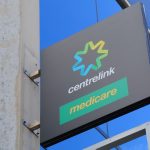Government to Refund $720 Million Extorted Through Robodebt

The Federal Government has announced it will refund more than $720 million dollars to people who were unlawfully issued with debt notices under Robodebt, which many have labelled an extortion scheme targeting those without means to challenge it.
And although the decision won’t bring back those driven to depression and even to suicide as a result of the burden of having to pay money or face the prospect of a criminal prosecution, it will vindicate the thousands victimised by the government’s patently illegal conduct.
The class action
A class action by more than 13,000 Australians was set to proceed later this year. The suit had been under way for some time, but gained momentum after a lawsuit, brought by Victoria Legal Aid in the Federal Court last year determined that raising debts which relied solely on income averaging was unlawful.
As a result, over the past few weeks Centrelink has been in the process of contacting anyone who was affected by Robodebt’s flawed algorithms which based calculations on income averaging’, to notify them of the class action, but now the Federal Government has announced that it will refund 470,000 debts, along with interest and fees.
Illegal system
Robodebt was introduced by the Turnbull Government in 2016.
At the time, the government hailed it as a huge triumph, saying it would “crack down on dole bludgers and welfare rorters” and “recover” billions of dollars over a period of just a few years.
The previous system, which was not automated, only generated about 20,000 letters a year. But in the early days of the new automated system, that number skyrocketed to around 20,000 letters a week.
But instead, it targeted many thousands of average Australians, sending notices asking them to pay debts they don’t owe. Many more have received notices with inflated debt figures based on incorrect calculations or misinformation within the system. Others, receiving payments such as Youth Allowance and Newstart have were asked to verify their income dating back as far as 2010.
Alarm bells about potential mistakes in the automated system were raised across the nation about 6 months into its existence, during December and January 2016, when Centrelink began tweeting the contact number for Lifeline.
Centrelink staff were simply unable to cope with the sheer volume of calls and complaints about the automated debt notices. Those who had received notices were being charged fees and interest and being pursued relentlessly by debt companies, or threatened with deductions from their current salaries until the debt was paid.
Powerless against the system
When Centrelink was unable to help people in a timely way, many felt completely powerless against the ‘system’ – the way that the scheme operated, the onus was on individuals to disprove their debt, rather than for the Government to authenticate it.
Around the same time, the Federal Government also introduced Departure Prohibition Orders (DPOs) that stopped anyone who owed a debt to Centrelink from leaving Australia, irrespective of the size of the debt, until either the amount owing was paid in full, the debtor makes an agreed lump sum payment, or enters into a repayment plan.
For some, the financial distress proved too much. More than 2000 people died after receiving a robo-debt notice between July 2016 to October 2018. While no cause for their death has ever been reported, and the Department of Human Services said it was ridiculous to draw conclusions from these numbers, it is known that almost a third were classified as ‘vulnerable’ – which means they had complex needs like mental illness, drug use or were victims of domestic violence.
The damage has been done. But at least now, there is justice for the majority of Robodebt victims who will start receiving their refunds in July this year.
It is possible that many more cases may be eligible for refunds, because despite the fact that the Government has pledged to pay back $721 million, according to information released by the Senate, more than 680,000 debts have been raised over the years, with a value of about $1.4 billion.
Anyone who believes they have been affected should contact Centrelink.







